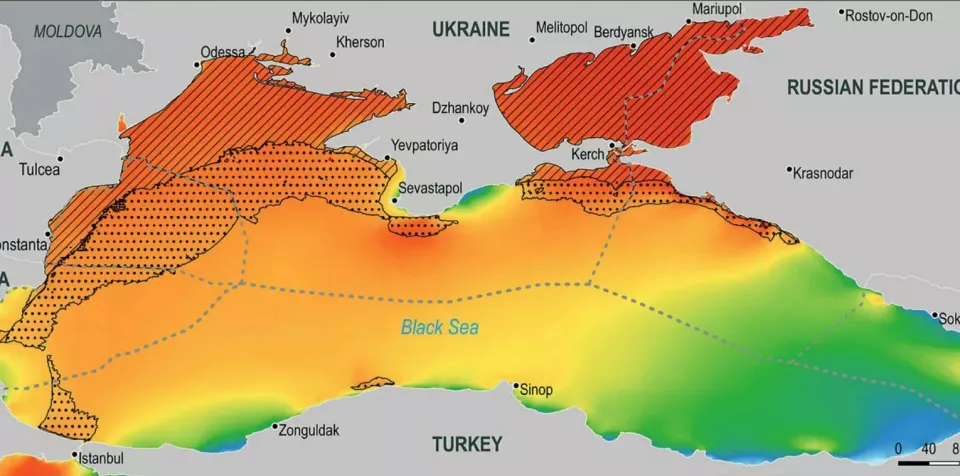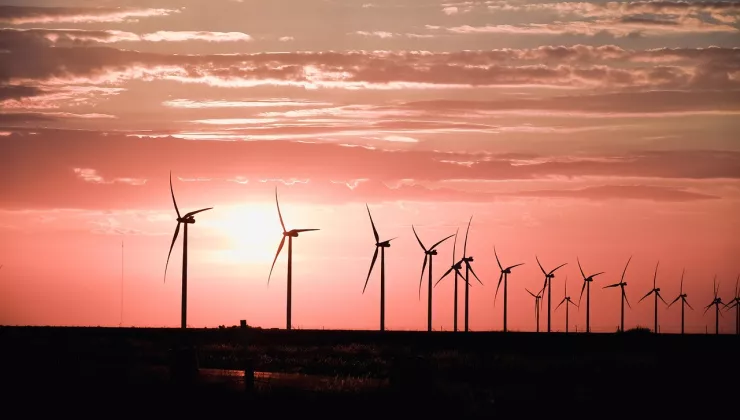Offshore wind potential in the Bulgarian Black Sea
From 2-6 September, the second edition of the Marine Renewable Energy Academy took place in the town of Burgas on the Bulgarian Black Sea coast. This five-day summer school is aimed at young professionals in the region who are interested in innovative technologies for offshore renewable energy.
Several international representatives took part in this event. Our COO Ann Overmeire was also present and shared some insights on sustainable marine infrastructure and marine spatial planning. During the event, we gained valuable insight in the Bulgarian plans and ambitions for offshore wind.
Major takeaways
- Wind resource & potential
The potential for offshore wind in the Black Sea is 160 GW, from which 78% in Bulgarian and Romanian waters.
In an easterly direction, favourable winds in the Bulgarian part of the Black Sea start to develop approximately 50 km off the coast. However, starting 20 km off the Bulgarian shore, water depths drop from 50 to 200m.
There are some locations with adequate wind speeds relatively close to the shore in the north, but these are close to the border with Romania and are part of an area that is closed off for defence purposes.
- Areas suitable for offshore wind
There are 3 potential suitable sites outside Natura 2000 areas and maritime traffic routes. The mean wind speed in these areas is 8 m/s versus 9-9.6 m/s in the Baltic Sea. Because of these moderate average wind speeds, power output in the Black Sea is expected to be 60% lower than in the Baltic Sea.
- Suitable foundation types
Suitable foundations for the water depths in the identified areas are jackets and tension leg platforms. Barge type foundations are expected to have too high accelerations.
- Policy & regulations
In 2023, an offshore wind bill was submitted to the Bulgarian parliament. Due to objections from the tourism and fishery sectors, the bill was withdrawn. Little progress has been made since then.
Romania on the other hand has recently passed an offshore wind bill, and intends to have a first project up and running by 2032. This may trigger further action in Bulgaria as well.

Pilot project
The gas company Petroceltic is developing a pilot floating offshore wind project in the North of the Bulgarian Black Sea at a distance of about 25 km from the shore. The pilot is financed by a project named BLOW (funded by UK Research & Innovation). Partners include Fraunhofer, EMEC, IREC (Catalunia) and the Belgian company Bexco.
Design
The foundation has been designed by Eolink. Eolink's floating concept is fit for wind speeds up to 10 m/s, which should meet the conditions in the Black Sea. A 5 MW turbine with a 140 m rotor will be installed in the pilot. Turbine sizes can go up to 12 MW. The rotor has 4 axes. There are 3 anchors connected to the seabed, and the turbine is self-orientating against the wind.
The goal is to achieve a LCOE < 87€/MWh by 2028. The scale-up potential is 450 MW.
Location
The pilot is located 25 km east of Varna in a gas concession of Petroceltic. The area is not located in or near a nature reserve and all necessary data for marine installation are available. The seabed is flat and composed of sand and mud. The gas field is almost depleted and the plan is to use the power produced by the turbine to inject CO2 from the cement industry in the empty gas field.
Wind conditions are not ideal because of the vicinity of the shore. Turbine efficiency is therefore expected to be limited to 27%. As the local water depth is 35 m, a bottom fixed turbine would have been possible, but the floater has been chosen as a pilot case for other sites in the Black Sea.
Challenges
The challenges experienced in this project so far are:
- Lack of government decision: the Bulgarian government has orally approved the project but Petroceltic is still waiting for a written approval.
- Supply chain: the structure will be constructed by GSP shipyard in Romania, but progress is slow. Also, necessary equipment like a suitable crane is often not available in Bulgaria. It is very difficult to obtain offers for this project because the pilot is too big for small suppliers and there is lack of interest from large suppliers because there are no economies of scale possible.
Outlook
The project is currently underway and will result in the first offshore wind turbine in Bulgaria. This will be a wonderful achievement.


